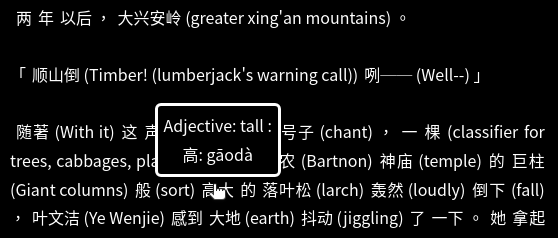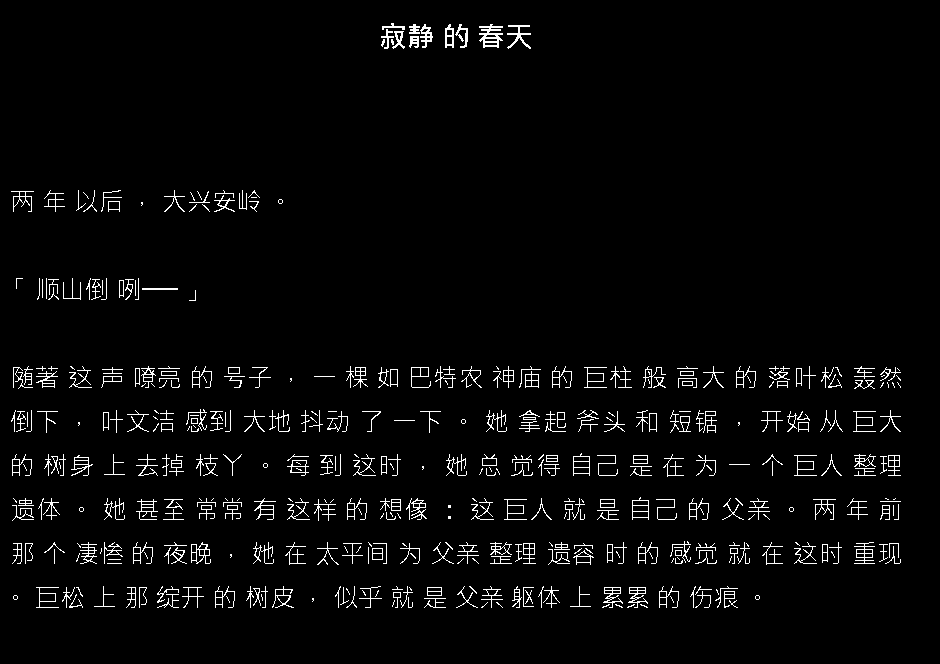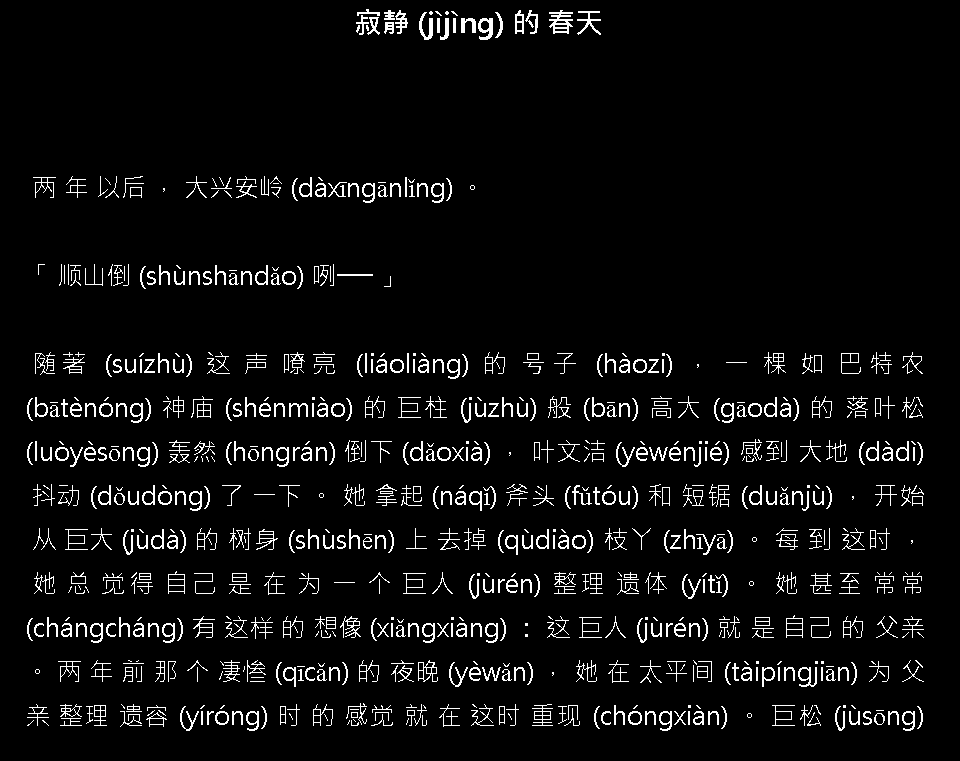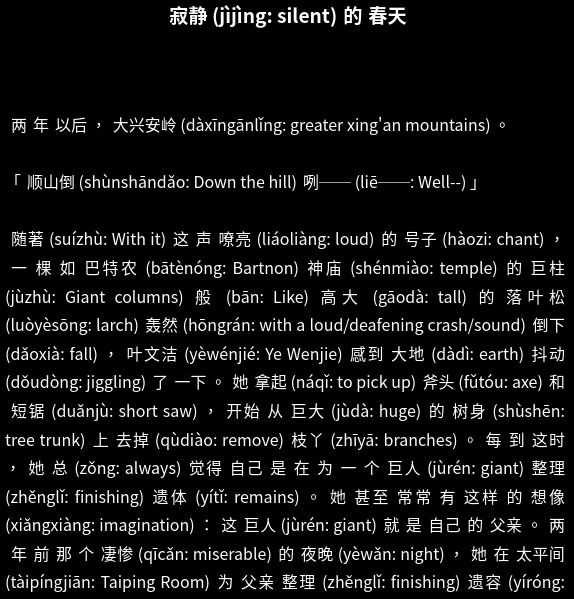You can configure these options wherever that makes sense on the content screens.
Because all learners have different language backgrounds, glossing with another language may not be the best way for you to understand and learn, so a few other options are currently provided. This is one of the active research aspects of the platform - what are the best glossing techniques for learners, if they have a choice between several? How does it affect comprehension? How does it affect enjoyment? How does it affect learning?
All the options have value for learning and the happier you are reading, the more learning value it will bring over time.
By default the system also segments texts into words (where the language doesn’t usually do that) but that can be turned off for each module (ebook reading, media/video or web) if you don’t want that.
Current In-Text Options

The current in-text glossing options available are:
| Name | Status | Comments |
|---|---|---|
| Unmodified Text | available | No glossing |
| Simpler words | basic support | If the system knows of synonyms that you already know, words are glossed with those, otherwise in your native language |
| Transliteration | available | The sound representation of the word (Pinyin for Chinese), great for heritage learners |
| Native Language | available | Context-based gloss in your native language |
| Transliteration + Native Language | available | Context-based gloss in your native language and a transliteration |
Popover

You can also activate the popover glossing option, that will present a very simply popup when the mouse goes onto a word (or with a long-press on Android). The popup appears whether you know the word or not, and contains the part of speech, the native gloss, a simpler (known) synonym (if one exists) and the transliteration (Pinyin).

Screenshots
Unmodified Text

Segmented Text


Transliteration


Native Language


Transliteration + Native Language


Future Glossing Modes
There are also a number of other enrichment styles that are in the pipeline. One particularly relevant for Chinese might be to only highlight compound words that it knows you know the component parts of (rather than gloss them). Or maybe a mix of all of the possible styles, depending on how common the words are and the particular part of speech. Text-to-speech will soon be available, so you can hear individual words, or even entire sentences. All these options, and many more, will become available over time and as Transcrobes gets a better picture of your knowledge, the rate you learn will increase dramatically.